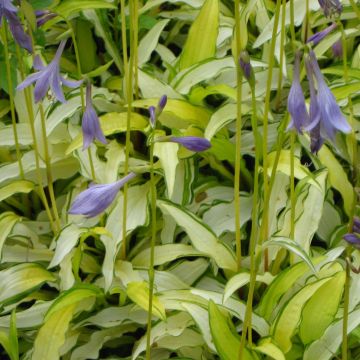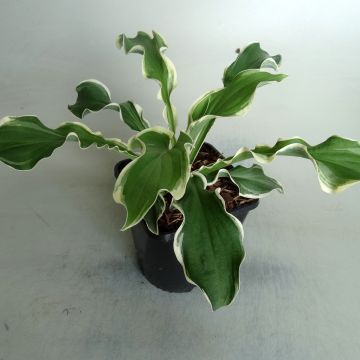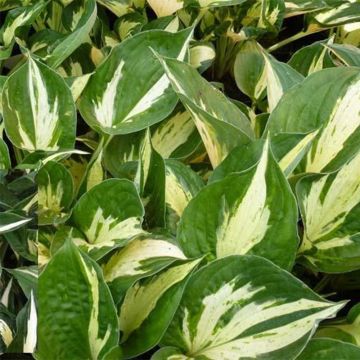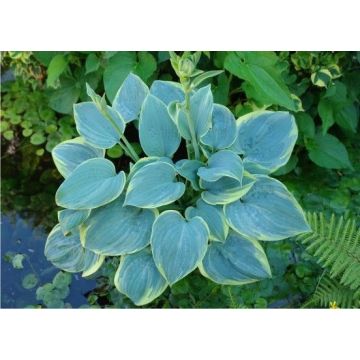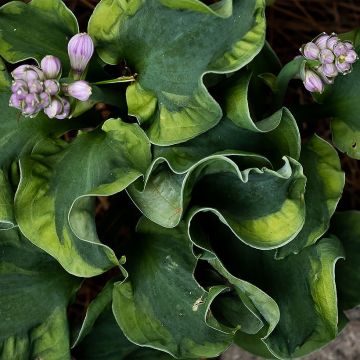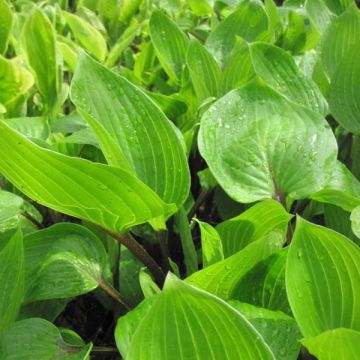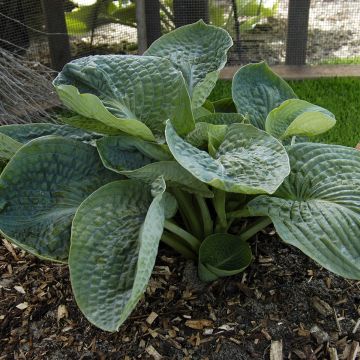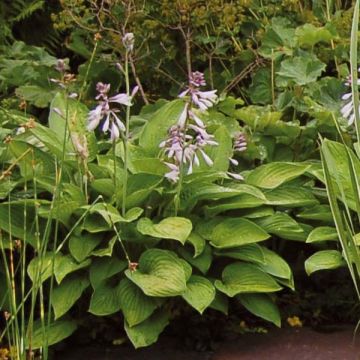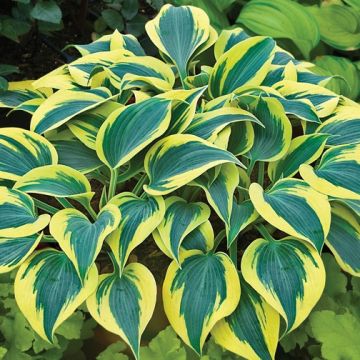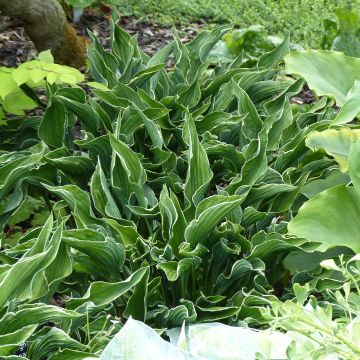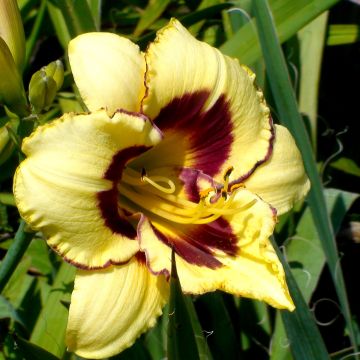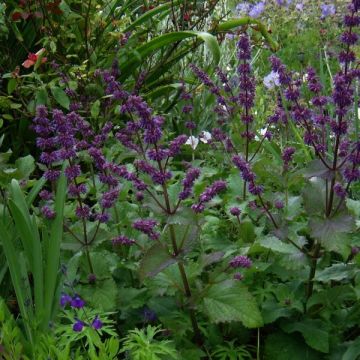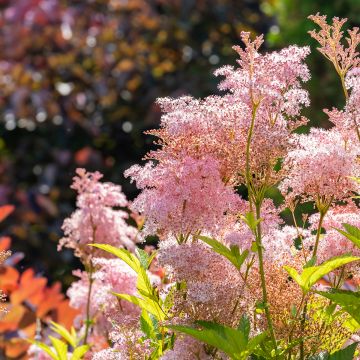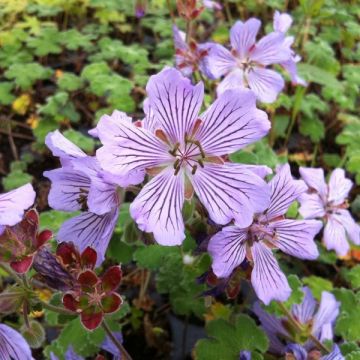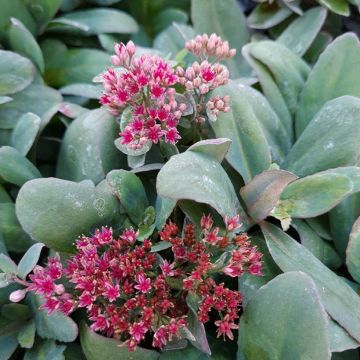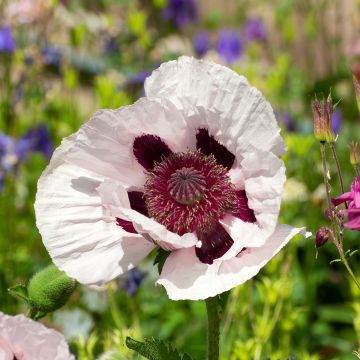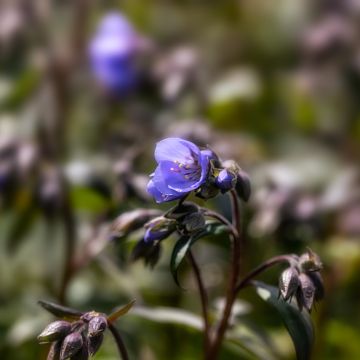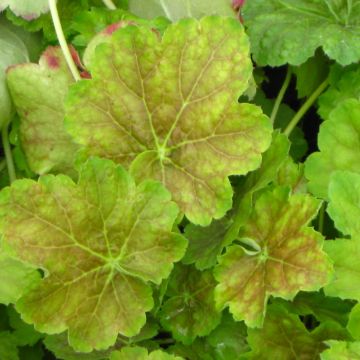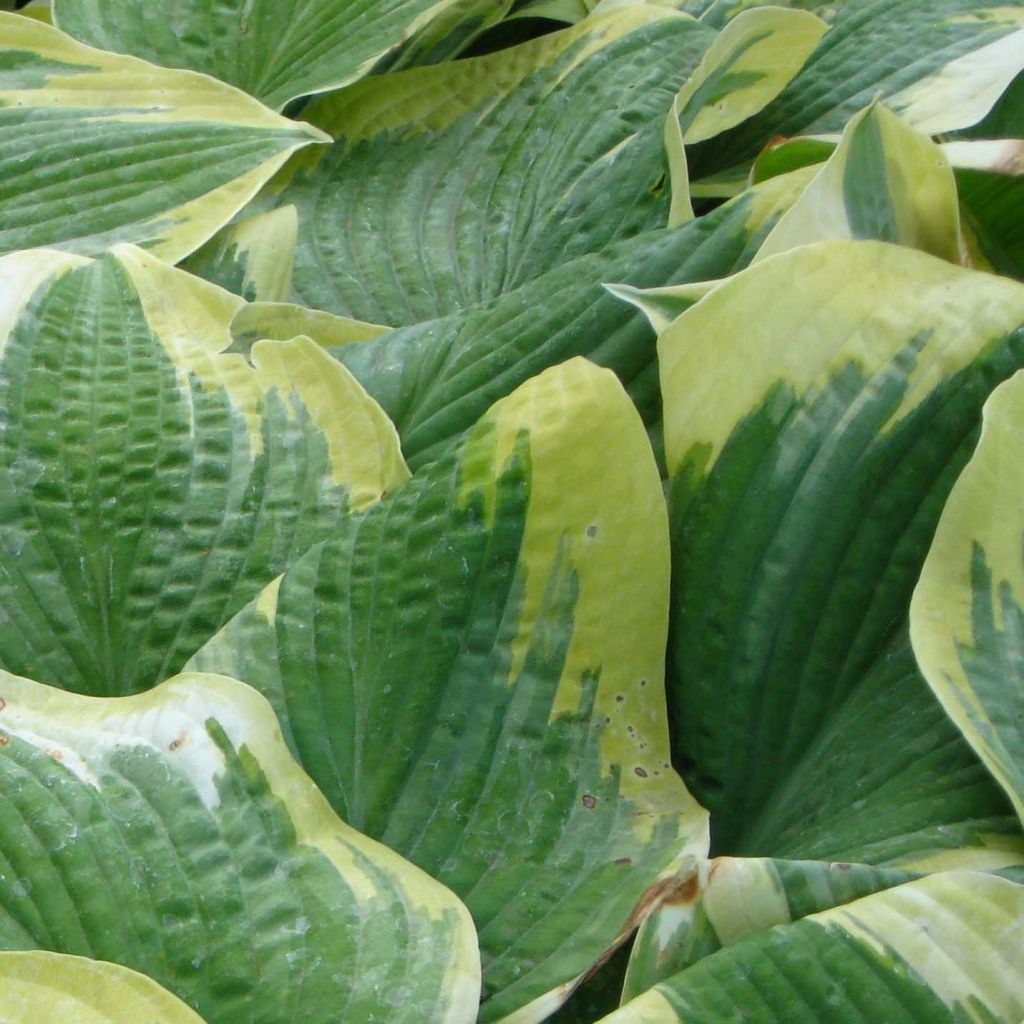

Hosta Robert Frost
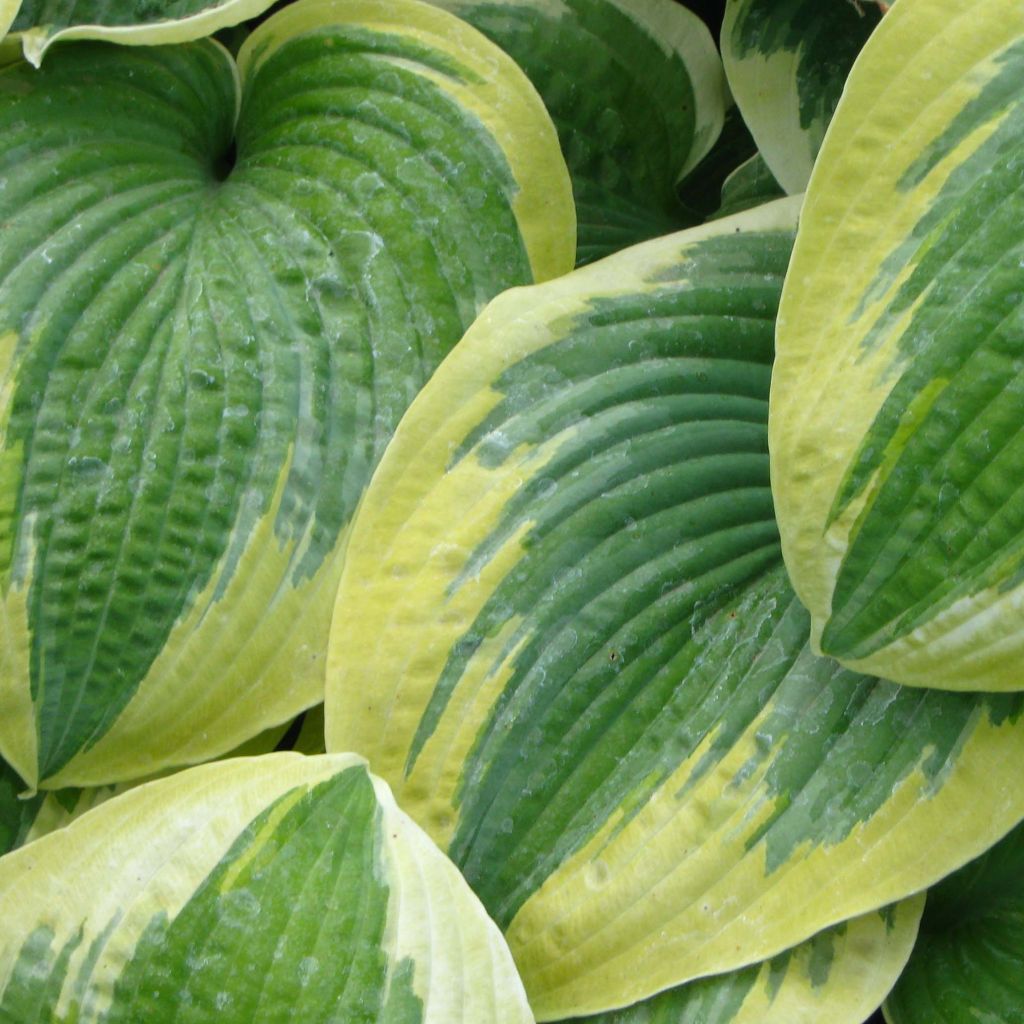

Hosta Robert Frost
Hosta Robert Frost
Hosta Robert Frost
Plantain Lily, Funkia
Nonexistent, 1 tiny leaf of a few mms blackened. Do not order so early in the season. Little hope.
Mary martine , 20/03/2018
This item cannot be shipped to the selected country
Delivery charge from €5.90
More information
Delivery charge from €5.90
More information
Schedule delivery date,
and select date in basket
This plant carries a 12 months recovery warranty
More information
We guarantee the quality of our plants for a full growing cycle, and will replace at our expense any plant that fails to recover under normal climatic and planting conditions.
From €5.90 for pickup delivery and €6.90 for home delivery
Express home delivery from €8.90.
Does this plant fit my garden?
Set up your Plantfit profile →
Description
Hosta 'Robert Frost' is a luxurious variety with sumptuous variegated foliage that appears frost-covered in spring. Its large undulate and puckered leaves are a dark icy blue-green, margined and softened with tender cream-white. In the centre of a cluster of thick leaves, pale almost double and fragrant flower spikes emerge in summer. 'Robert Frost' is a majestic variety with a theatric temperament, destined to become a focal point in shaded areas. Best grown in ordinary moist soil, preferably in partial shade or morning sun to enhance the beauty of the foliage.
Hostas are deciduous perennial plants that belong to the lily family, or hostaceae. Hosta 'Robert Frost' stands out with its tall stature and rare variegated foliage. It is a robust and long-lived plant. The plant will reach a height of 60 cm (24in) or more, with a spread of 50 cm (20in) when in bloom. It forms a wide clump, wider than it is tall. Its foliage is deciduous, broad, oval to lanceolate in shape, with very prominent veins. The lamina is thick and puckered. Pale yellow to white margins surround areas of deep blue-green, silver-dusted in spring, which turns variegated green in summer as the margins widen and fade. Note that the foliage colours and contrast of colours are enhanced with slightly sunny exposure. Flowering takes place in July-August, in the form of lightly scented bell-shaped flowers. They are double, very pale lavender in colour, pendulous, and clustered towards the top of peduncles that can reach a height of 80 cm (32in).
Native to China, Korea, and Japan, Hostas are very hardy plants. They are most commonly found as groundcover under deciduous trees, in damp borders or rockeries, and along edges, especially near ornamental ponds. Hosta 'Robert Frost' pairs well with alchemillas, lungworts, helxine, ferns, epimediums, and Claytonia sibirica, forming beautiful colourful duos that require minimal maintenance. It will also look stunning on a dark-coloured mulch, alongside columbines and tall digitalis or small violets. All hostas grow well in pots and can remain in the same container for several years. As long as the foliage is not too dense, watering from the top of the pot can be done. Then place a saucer under the pot to keeping the moisture level constant in summer.
The majority of species widespread in our gardens have been introduced from Japan. Edible, hostas are called urui in Japan, where they are commonly consumed.
Hosta Robert Frost in pictures
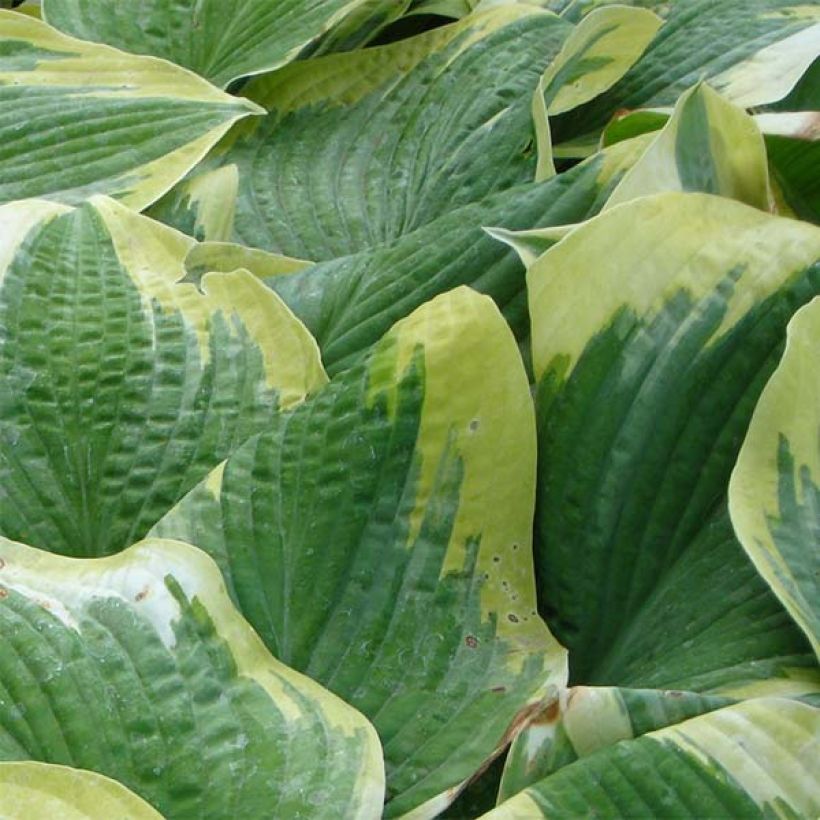

Flowering
Foliage
Plant habit
Botanical data
Hosta
Robert Frost
Liliaceae - Hostaceae
Plantain Lily, Funkia
Cultivar or hybrid
Other Hostas A to Z
Planting and care
Hostas can be planted in spring or autumn. Hostas prefer a deep, humus-rich, loose soil, which is preferably neutral to acidic and moist to wet throughout the year. Plant them in shade or partial shade and in a sheltered position away from strong winds.
Prepare a planting hole of 20 cm (8in) x 20 cm (8in) x 20 cm (8in). If your soil is heavy, mix half compost with crumbled soil, partially backfill, and place your plant in a clump so that the top of the clump is covered with 3 cm (1in) of soil. The addition of a fertiliser (bonemeal) will nourish your plant during its rooting period without the risk of burning. Ensure that the collar is well above ground level. Firm the soil and water generously to eliminate air pockets. If the weather is dry, you will need to water regularly for a few weeks to help the establishment of your plant. Also, water regularly in case of a dry summer.
With their preference for humid areas, slugs and snails never stray too far from hostas. Even though blue or variegated hostas often have thicker and tougher foliage, which is less appetising to slugs, these plants must be protected from gastropods. Protect your hostas by surrounding them with granules approved in organic agriculture, eggshells, coffee grounds, mulch, or any dry and rough natural substance that repels them. Hedgehogs are the gardener's best allies in the fight against gastropods because, unlike chickens, they do not dig up the soil and do not attack the lush green shoots of young plants. Finally, some plants have a repellent odour for slugs, such as wormwood and garlic.
Planting period
Intended location
Care
Summer flowering perennials
Haven't found what you were looking for?
Hardiness is the lowest winter temperature a plant can endure without suffering serious damage or even dying. However, hardiness is affected by location (a sheltered area, such as a patio), protection (winter cover) and soil type (hardiness is improved by well-drained soil).

Photo Sharing Terms & Conditions
In order to encourage gardeners to interact and share their experiences, Promesse de fleurs offers various media enabling content to be uploaded onto its Site - in particular via the ‘Photo sharing’ module.
The User agrees to refrain from:
- Posting any content that is illegal, prejudicial, insulting, racist, inciteful to hatred, revisionist, contrary to public decency, that infringes on privacy or on the privacy rights of third parties, in particular the publicity rights of persons and goods, intellectual property rights, or the right to privacy.
- Submitting content on behalf of a third party;
- Impersonate the identity of a third party and/or publish any personal information about a third party;
In general, the User undertakes to refrain from any unethical behaviour.
All Content (in particular text, comments, files, images, photos, videos, creative works, etc.), which may be subject to property or intellectual property rights, image or other private rights, shall remain the property of the User, subject to the limited rights granted by the terms of the licence granted by Promesse de fleurs as stated below. Users are at liberty to publish or not to publish such Content on the Site, notably via the ‘Photo Sharing’ facility, and accept that this Content shall be made public and freely accessible, notably on the Internet.
Users further acknowledge, undertake to have ,and guarantee that they hold all necessary rights and permissions to publish such material on the Site, in particular with regard to the legislation in force pertaining to any privacy, property, intellectual property, image, or contractual rights, or rights of any other nature. By publishing such Content on the Site, Users acknowledge accepting full liability as publishers of the Content within the meaning of the law, and grant Promesse de fleurs, free of charge, an inclusive, worldwide licence for the said Content for the entire duration of its publication, including all reproduction, representation, up/downloading, displaying, performing, transmission, and storage rights.
Users also grant permission for their name to be linked to the Content and accept that this link may not always be made available.
By engaging in posting material, Users consent to their Content becoming automatically accessible on the Internet, in particular on other sites and/or blogs and/or web pages of the Promesse de fleurs site, including in particular social pages and the Promesse de fleurs catalogue.
Users may secure the removal of entrusted content free of charge by issuing a simple request via our contact form.

































